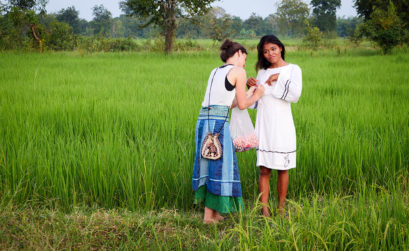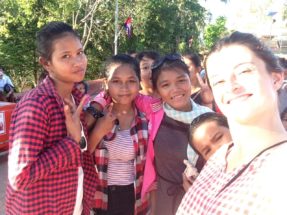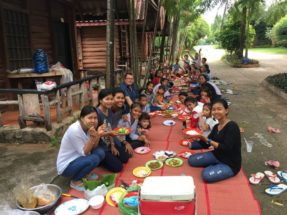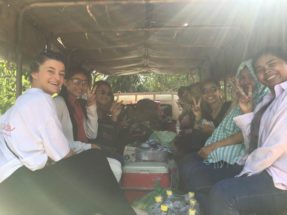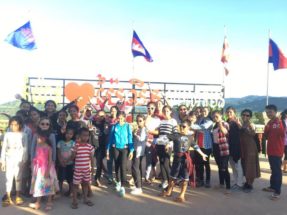Volunteering in Cambodia for Femmes des Rizières – a very personal report by Gabrielle Friedmann
A history about fashion…
A history about humanitarian and humanity…
A history about loving and sharing
Briefly: A wonderful history
Today my five months volunteering as the first designer for the brand «Femmes des Rizières» (Woment from the paddy fields) come to an end. «Femmes des Rizières» is the brainchild of the Cambodian NGO avec in close collaboration with Swiss based WeCare-Association.
Early in July 2018 I left Paris to travel to Cambodia. Already before this adventure began I was full of ideas and thoughts, I dreamed about it and I tried to imagine how it would be ….as I am a naturally optimistic person, my head was full of idylic images which even to me did not seem very realistic. Never in my wildest dreams could I have envisioned how extraordinary and exciting this mission was going to be.
Upon arrival at the Safe House of the NGO avec in Cambodia I found myself in the middle of a small paradise which has become home to 34 children and 3 substitution mothers over the course of the last 10 years. A safe heaven for these children who had to live through dangerous situations, injustices and fear in their earlier lives.
Between myself and the children things clicked immediately and the five months were filled with lots of fun and laughter and many very spicy dishes were shared as well – which occasionally were a huge challenge for me.
The close contact to these kids taught me that there is something that cannot be taken away even from poor people and that is joy. Joyfulness cannot be bought and you cannot loose it either. It might get out of sight occasionally but is always lingering somewhere close, somewhere inside the person.
Moreover, I am convinced that one of the main reasons for the SAFE House of the NGO avec being such a magic place is that upon arrival you perceive above all this joyfulness.
Then. My adventure as woman from the paddy fields…
In the beginning there were the tailors, the name of the brand, the logo and more goodwill than I had every seen before.
The tailors, who above and foremost are women from the paddy fields, have an incredible power and inspiring force. They are young, beautiful and often have at least two young children and they are fighting like lionesses about their survival now and never loose their smile when thinking about tomorrow.
Together we have developed a collection of a total of 27 models with 2 or 3 color variations for each model. An incredible achievement ! Every time I think about this collection I am overwhelmed by joy.
I would like to tell my former colleagues: Women from the paddy fields, you are beautiful and like Apsaras, those goddesses of feminity with their incredible force and their glow. I would like to thank you four for these five intense months: We have been working a lot but we also had a lot of fun and I just loved it !
Of course I hope, that this project will be successful and able to achieve its goal to provide young Khmer women with a work that is fairly remunerated and they can rely on. Those women really deserve it !
In particular, I would like to mention Susi (WeCare-Association), Theavy and Patrik (NGO AVEC), the three guardian angels of the project who were closely accompanying the mission and all people involved – and there were a lot of people ! Without the three of you the mission would not have been as extraordinary! You are witty, openminded, patient and interesting – I have to stop here as Patrik has told me often that too many compliments are boring😉. I consider myself very lucky having met the three of you and above all that I have been given the opportunity to participate in the development of this project.
Last but not least I would like to thank all those wonderful people I met over the last five months. I am leaving very proud of all our joint efforts and achievements. It was a wonderful story and I am completely overwhelmed.

